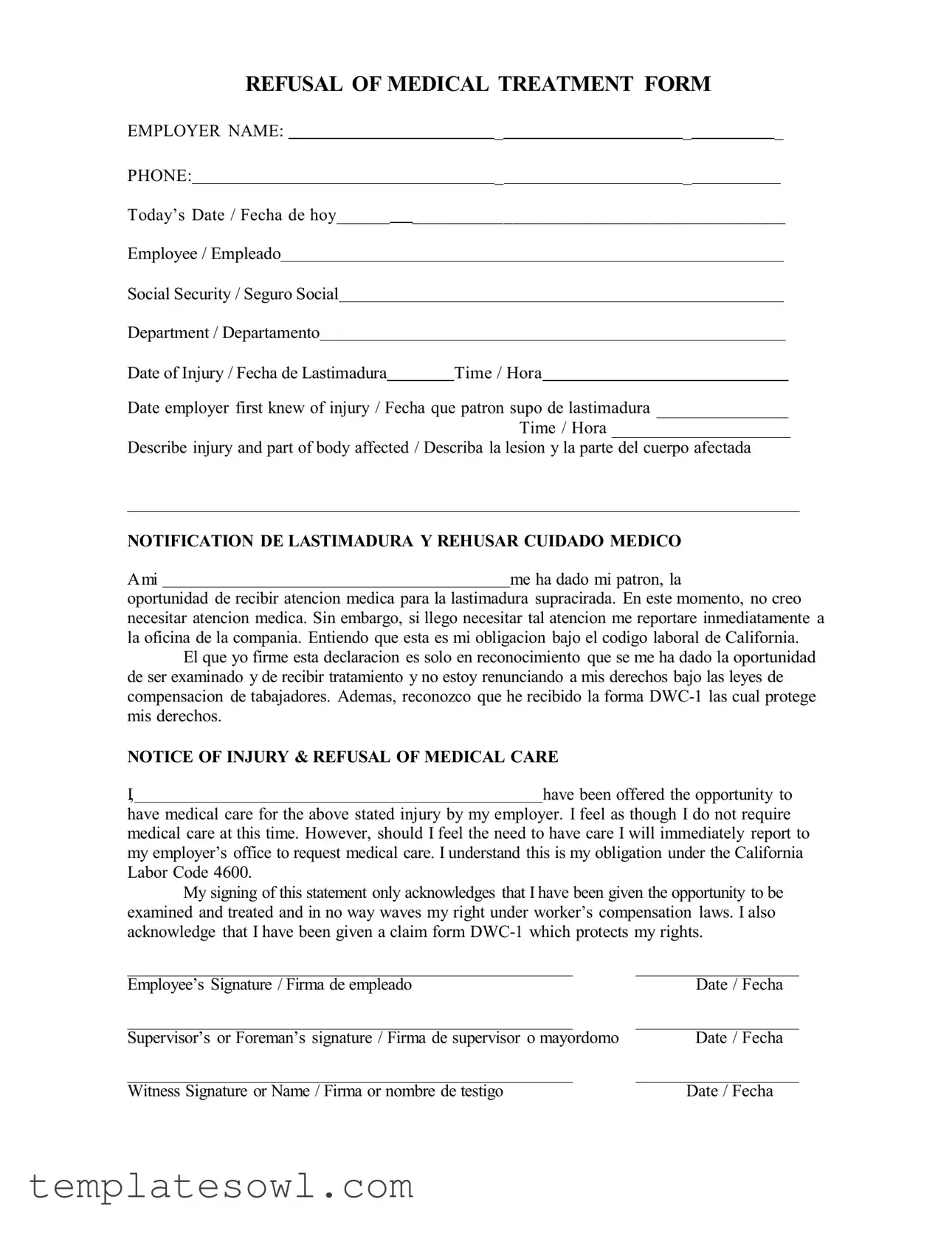What is a Refusal of Medical Treatment form?
The Refusal of Medical Treatment form is a document that allows an employee to formally decline medical treatment for a work-related injury. This form acknowledges that the employee has been offered medical care but has chosen not to seek it at that moment. Importantly, it does not affect the employee's rights under worker’s compensation laws.
Why would an employee refuse medical treatment?
Employees might refuse medical treatment for various reasons. They may feel that their injury is not serious enough to require medical attention at that time. Additionally, they might prefer to monitor their condition first or have an existing health issue that they feel comfortable managing without immediate clinical intervention.
What should be included in the form?
The form typically includes the employer's name, the employee's information (such as name and Social Security number), details about the injury (e.g., date, time, and a description of the injury), and signature lines for both the employee and a supervising official. Also, it contains a statement about the employee's acknowledgment of their rights under worker’s compensation laws.
What happens after an employee signs this form?
Once signed, the form serves as documentation that the employee was made aware of their medical options and chose not to pursue treatment at that time. The employee should keep a copy for their records. Should the condition change or worsen, they must follow up with the employer to request medical care as needed.
Can refusing medical treatment affect an employee's workers’ compensation claim?
Refusing medical treatment does not in itself affect an employee's right to file a workers’ compensation claim. However, it is vital for the employee to understand that their refusal could impact the way their injury claim is handled. Should complications arise, it might be more challenging to establish a connection between the injury and the need for later treatment if no initial care was sought.
What should an employee do if their condition worsens after refusing treatment?
If an employee's condition worsens, they are encouraged to promptly seek medical care. They should inform their employer right away and follow any necessary protocols for receiving treatment. If they had completed the Refusal of Medical Treatment form, referencing that form may clarify their earlier decision during this process.
Is it mandatory to complete a Refusal of Medical Treatment form?
While it may not be legally required for every situation, many employers provide this form as a means to document the employee's decision. Completing the form helps protect both the employee’s rights and the employer’s interests by providing a clear record of the employee's choice regarding medical care.
Can an employee change their mind after signing the form?
Yes, an employee can change their mind after signing the Refusal of Medical Treatment form. If they feel later that they do require medical treatment, they should immediately report this to their employer and request care. Their rights to seek medical attention are always intact, regardless of prior decisions.

